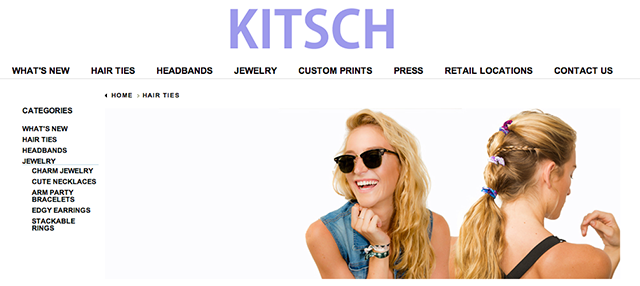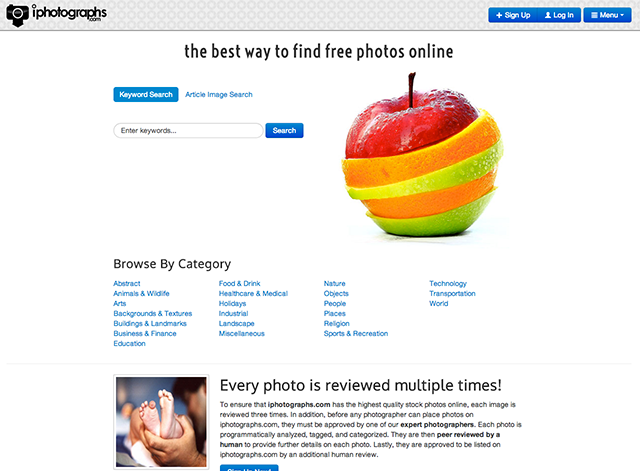11 Rules to Follow When Creating Successful Websites
Considering that the Internet is home to 2.2 billion people who spend their time online, having a successful website is the fundamental part of any business’s success. Consumers find and share information online, and they make buying decisions based on what their friends see and share. The Internet is interactive, and at the center of it all is a kick-ass website. I see it as a spider web: in the center is your website, and surrounding it are webs of inbound marketing tools that overlap. Social-media networks and blogs all attract consumers and pull them into your website, with the ultimate goal of driving traffic to your site. Once people end up on your website, users will then, and only then, decide if they’re going to buy or ditch it for the next-best link. Every market is competitive, and it’s best to create a successful website from the get-go. Here are the top 11 rules I put into action when creating stellar websites:
1. Hardcore Brainstorming Session
I commit myself to an intensive brainstorming session before I start creating a website. I always put myself in the customers’ shoes and try to speak their language. You know what you’re thinking, but your users aren’t mind readers. One of the greatest mistakes people make when creating a website is not spending enough time generating ideas and really digging deep in the beginning phase.

2. Record Your Own Interview
Generate a list of questions that answer the everyday questions of who, what, where, and when. Spend some time asking yourself these questions, and write down your answers on a notepad. Think your answers through. When you’re all ready, set aside about 30 minutes of quiet time and ask someone to interview you. That someone could be your business partner, your spouse, or a friend. Grab your notes, turn on the mic, and take a stab at it. Be upbeat and excited. No need to let your nerves get the best of you—the audio file will be for your ears only. You’d be amazed at how easy your content will be to write when you listen to your own interview. This will also help you to create your own quotes or uncover cool slogans.

3. Create a Roadmap of the Website
Think about the user’s journey through each page and what you want to convey. I start off with a stack of blank paper and actually sketch out what I want to put on each page. It helps me to determine where I want images, slideshows, articles, etc. A mechanical pencil and a handful of erasers will come in handy.

4. Decide on a Theme or a Vibe
What do you want your users to see? What feeling or emotion do you want to create when someone looks at your home page? Is it modern? Is it edgy? Is it playful and whimsical? Is it formal? Whatever vibe you choose, be sure to stick to it and not deviate as you expand your site. Support the theme you wish to convey with images, background music, and/or a video. Visual tools will help define your brand and spark interest. Just a word of advice when deciding whether to use music and what type of music to use: Use sounds that are complementary and embed them in a place where they’re not interruptive or shocking when a user firsts pulls up your site. Consider this scenario: You’re quietly sitting in a coffee shop or commuting to work on public transportation when suddenly, Linkin Park screeches out of your speakers. Startled and in a panic, you click off the site, never to go there ever again. Don’t be that website! The tactic of surprise might have worked in years past when embedding music and video emerged on the web scene, but not today.

5. Great Content
Create content that speaks to your audience. With the rise of social media and online sales, web content has become increasingly more vital in your business-development strategies. Consider hiring a professional writer. Compelling content is informative, relevant, and interesting. Think along the lines of people going to your website because they can’t find what they need on other sites. Set yourself as the expert in your niche, and your audience will come back for more and bring along a friend or two.
6. Make It Easy to Navigate
Don’t try to squish everything into your home page or About Us page. Compartmentalize your content. People might be looking for something specific, and so it’s OK to have more tabs on your menu if an area of your company deserves its own recognition. For example, let’s say your online store sells women’s accessories. You break it down by products, but you have some unique and ambiguous items. Don’t just tack them on at the bottom; create a separate tab, and clump them all together under an eye-catching title.

7. Be Creative and Be Clear
Put some time and effort into choosing your fonts and colors for your content. Play around with how different fonts work together and how that can create a harmonious division between topics. If everything is packed into one paragraph, the eye can’t follow, and it will look too mundane and cumbersome to read. There are various fonts such as Franklin Gothic or Rockwell that are easy on the eyes, and color schemes are available that really make the content pop. Years ago, companies could get away with a plain Jane website, but in this day and age, you need an attractive site to grow your business. If you’re clueless about design, don’t be shy—ask a friend to help, or hire a web-design consultant. Take a look at the following home page—the colors and font choices are working harmoniously, and the text really stands out and is clear and easy to read.

8. K.I.S.S
At times, I, too, can get carried away with awesome content and ideas, but I then remind myself of the popular phrase K.I.S.S. and remember to keep on topic and not be too wordy in my messages. A rule of thumb: Keep it short and sweet—try to keep text blurbs to around 50 words.

9. Don’t break the law!
Copyright law, that is. Did you know that you can be fined upward of $8,000 for using an image you find on Google images? Take caution and do your homework before placing that super-awesome photograph on your home page. An amount to the tune of $8,000 could easily bankrupt a start-up business. A majority of images that can be found on the web have a watermark (a stamped logo on an image to protect that image from unauthorized use online), so you wouldn’t be able to use those in any way without purchasing them. If you land on a must-have image, ask permission or pay for the image. An image is worth a thousand words, and every penny. While technically, copy-and-paste seems easy to do, take my word for it—you don’t want to land yourself in court. You can buy images from sites such as iPhotographs.com, shutterstock.com, or istockphoto.com. You can also find royalty-free images online, although the quality might not be best suited for the goals you wish to achieve. For instance, compare the two images below. The first image is from Getty Images, and the other is from a royalty-free website. If you’re on a budget, try your luck at commons.wikimedia.org

10. Don’t Forget to Add Social-Media Icons on Your Page
Remember to link your website to your social-media networks, and vice versa! Creating a website and just leaving it won’t do you any good. To locate an icon for Facebook, Twitter, etc., IconFinder acts as a search engine for the most widely used icons.
You have to feed your social media through the use of blogs, pictures, podcasts, video, and whatever other online technology you can find. By providing helpful and interesting content, you gain the respect, trust, and loyalty of potential customers and turn them into paying customers.
![]()
11. Prepare to Optimize the Website
Search-engine optimization, better known as SEO is vital when creating a website. You have done all this work and you’re about ready to launch your dialed-in website, but have you given any thought to how you’re going to optimize your website? Your SEO efforts are critical to successfully getting your website in front of potential customers. People rarely scroll past the first couple of pages on any given search, and so if your website isn’t optimized to show up on top, chances are you’re going to have limited traffic stopping in.

In Conclusion:
Creating a successful website is as essential as opening your doors every morning. Don’t take any chances on losing out on the potential to reach a much larger audience by keeping the doors closed. Settling for a mediocre website won’t open any doors. The key to success? Creating a strong online presence and dominating your market will give you the edge.
